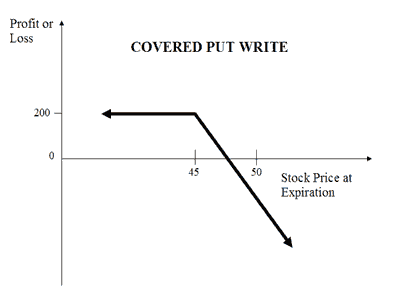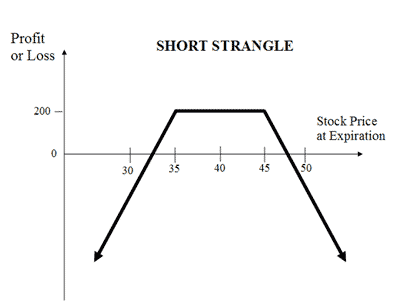 Zerodha (Trading & Demat Account)
Zerodha (Trading & Demat Account)
FREE Equity Delivery and MF
Flat ₹20/trade Intra-day/F&O
 Zerodha (Trading & Demat Account)
Zerodha (Trading & Demat Account)
FREE Equity Delivery and MF
Flat ₹20/trade Intra-day/F&O

|
|
Compare Covered Put (Married Put) and Short Strangle (Sell Strangle) options trading strategies. Find similarities and differences between Covered Put (Married Put) and Short Strangle (Sell Strangle) strategies. Find the best options trading strategy for your trading needs.
| Covered Put (Married Put) | Short Strangle (Sell Strangle) | |
|---|---|---|
 |
 |
|
| About Strategy | The Covered Put is a neutral to bearish market view and expects the price of the underlying to remain range bound or go down. In this strategy, while shorting shares (or futures), you also sell a Put Option (ATM or slight OTM) to cover for any unexpected rise in the price of the shares. This strategy is also known as Married Put strategy or writing covered put strategy. The risk is unlimited while the reward is limited in this strategy. How to use a Protective Call trading strategy? The usual Covered Put looks like as below for State Bank of India (SBI) Shares which are currently traded at Rs 275 (SBI Spot Price): Covered Put Orders - SBI Stock OrdersSBI Strike Price Sell Underlying SharesSell 100 SBI Shares ... Read More | The Short Strangle (or Sell Strangle) is a neutral strategy wherein a Slightly OTM Call and a Slightly OTM Put Options are sold simultaneously of same underlying asset and expiry date. This strategy can be used when the trader expects that the underlying stock will experience a very little volatility in the near term. It is a limited profit and unlimited risk strategy. The maximum profit earn is the net premium received. The maximum loss is achieved when the underlying moves either significantly upwards or downwards at expiration. A net credit is taken to enter into this strategy. For this reason, the Short Strangles are Credit Spreads. The usual Short Strangle Strategy looks like as below for NIFTY current index value at 10400 (NIFTY S... Read More |
| Market View | Bearish | Neutral |
| Strategy Level | Advance | Advance |
| Options Type | Put + Underlying | Call + Put |
| Number of Positions | 2 | 2 |
| Risk Profile | Unlimited | Unlimited |
| Reward Profile | Limited | Limited |
| Breakeven Point | Futures Price + Premium Received | two break-even points |
| Covered Put (Married Put) | Short Strangle (Sell Strangle) | |
|---|---|---|
| When to use? | The Covered Put works well when the market is moderately Bearish |
The Short Strangle is perfect in a neutral market scenario when the underlying is expected to be less volatile. |
| Market View | Bearish When you are expecting a moderate drop in the price and volatility of the underlying. |
Neutral When you are expecting little volatility and movement in the price of the underlying. |
| Action | Sell Underlying Sell OTM Put Option Suppose SBI is trading at 300. You believe that the price will remain range bound or mildly drop. The covered put allows you to benefit from this market view. In this strategy, you sell the underlying and also sell a Put Option of the underlying and receive the premium. You will benefit from drop in prices of SBI, the Put Option will minimize your risks. If there is no change in price then you keep the premium received as profit. |
Sell 1 out-of-the-money put and sell 1 out-of-the-money call which belongs to same underlying asset and has the same expiry date. |
| Breakeven Point | Futures Price + Premium Received The break-even point is achieved when the price of the underlying is equal to the total of the sale price of underlying and premium received. |
two break-even points A strangle has two break-even points. Lower Break-even = Strike Price of Put - Net Premium Upper Break-even = Strike Price of Call+ Net Premium" |
| Covered Put (Married Put) | Short Strangle (Sell Strangle) | |
|---|---|---|
| Risks | Unlimited The Maximum Loss is Unlimited as the price of the underlying can theoretically go up to any extent. Loss = Price of Underlying - Sale Price of Underlying - Premium Received |
Unlimited The maximum loss is unlimited in this strategy. You will incur losses when the price of the underlying moves significantly either upwards or downwards at expiration. Loss = Price of Underlying - Strike Price of Short Call - Net Premium Received Or Loss = Strike Price of Short Put - Price of Underlying - Net Premium Received |
| Rewards | Limited The maximum profit is limited to the premiums received. The profit happens when the price of the underlying moves above strike price of Short Put. |
Limited For maximum profit, the price of the underlying on expiration date must trade between the strike prices of the options. The maximum profit is limited to the net premium received while selling the Options. Maximum Profit = Net Premium Received |
| Maximum Profit Scenario | Underlying goes down and Options exercised |
Both Option not exercised |
| Maximum Loss Scenario | Underlying goes up and Options exercised |
One Option exercised |
| Covered Put (Married Put) | Short Strangle (Sell Strangle) | |
|---|---|---|
| Advantages | Its an income generation strategy in a neutral or Bearish market. Also allows you to benefit from fall in prices, range bound movements or mild increase. |
The strategy offers higher chance of profitability in comparison to Short Straddle due to selling of OTM Options. |
| Disadvantage | The risks can be huge if the prices increases steeply. |
Limited reward with high risk exposure. |
| Simillar Strategies | Bear Put Spread, Bear Call Spread | Short Straddle, Long Strangle |

Add a public comment...

FREE Intraday Trading (Eq, F&O)
Flat ₹20 Per Trade in F&O
|
|